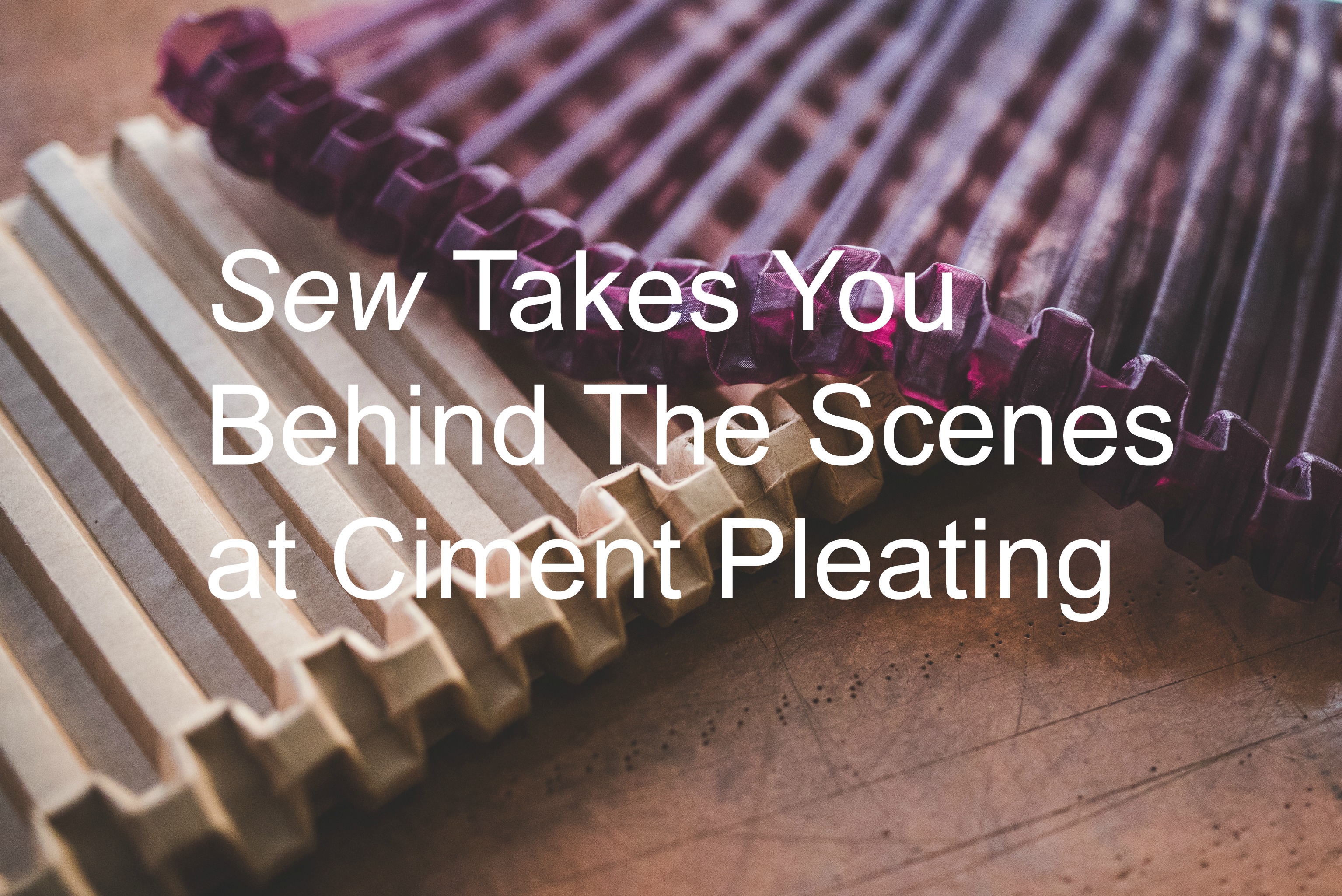2017

As part of our heritage series, we took you on a journey through the ages of the pleating process. We followed the talented folk at Ciment Pleating while they made us a spectacular sunray pleat for our peplum top project which featured in our February issue. So that you can see exactly what goes into creating the gorgeous pleated fabrics you see today, we wanted to give you a sneak peek behind the scenes at the oldest pleating firm in the UK.
Opening its doors back in 1925, Ciment Pleating is the oldest pleating firm in the UK. They have developed a reputation with their customers as the number one for pleating in the country, regularly exporting their services to Europe and the rest of the world. As a family run business, spanning three generations of the Weinert name, they pride themselves on the utmost quality. The company supplies specially pleated fabrics for fashion and interior designers, home dressmakers, fashion colleges, film companies and advertising firms as well as theatrical costumiers and milliners. “There’s not a massive market for pleating here in the UK, so we mainly work with high-end clientele,” Matt tells Sew.
In essence, pleating is the art of folding fabric to create volume and texture. To pleat fabric, you first need a pattern or a mould, which is made up of two pieces of card that are folded identically so that they can fit together. Most of the moulds used have a wrapper on the outside to protect the pattern during the heating process.

In order to pleat fabric, the two pieces of card need to be separated with one laid flat on a table.

The fabric is then placed on top of the card.

The remaining card is then placed on top of the fabric.

Once the fabric is sandwiched between the two pieces of card, the pattern needs to be folded into shape and rolled up tightly.

It is then placed in a steam cabinet to heat set the fabric into the required shape. After the pattern has been left to cool, the fabric can be removed and will now maintain the shape of the pattern used to pleat it.
Polyester fabrics work particularly well for pleating as they are made from plastic, which means when it comes in contact with a heat source, it becomes permanently altered. That’s why most ready-to-wear pleated garments you’ll see are made from polyester. They can be washed easily and don’t require any ironing – bonus!
Check out our February issue to see our fabulous sunray pleat featured in our peplum top!
For more information and details on the pleating process, head to www.cimentpleating.com
New this week
.jpg)
Quick Quilting & Patchwork Patterns and Inspiration
9 Apr 2025
[includes sponsored content] From small pieced projects to statement throws, these patterns and products…

Easy Ways To Get Kids Sewing!
11 Mar 2025
[contains sponsored content] Share your love of sewing with a young one and give…

Creative Book Awards 2025 Shortlist Unveiled!
17 Jan 2025
Welcome to the Creative Book Awards 2025! Since launching in 2021, these awards…
